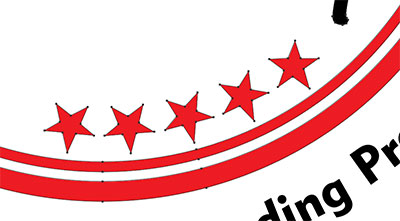Artwork Files Guide
Vector files
A quick explanation on vector files.
If you are not a graphic designer, the term ‘vector file’ would probably make no sense at all and; justifiably so! Follow our easy to read Artwork Files Guide and sharpen your learning.
Basically, there are two groups of electronic files that contain images and/or text. One of them is a ‘raster’ file which you would probably unwittingly be aware of. These ‘raster’ files are typically ‘jpgs’ and as you probably know, a digital photo of your favourite person or place captured by your camera transforms into a jpg file when you pull it into your electronic device or computer. The issue with ‘raster files’ ( such as jpeg discussed above as well as png, .tiff, .gif, .bmp, .exif files) is that they can only be printed with severe limitations on size. The technical reason for this limitation is that a raster file/image is made up of tiny dots called pixels where, on face value and to the naked eye it looks like a perfectly good image. However, when one zooms in on the image (much like a telescope action) you will quickly see the image becoming more and more blurry as these little ‘pixels’ (dots) become further and further apart.
This is where a ‘vector file’ comes into play. Vector images are made up of geometrically based shapes: lines, filled areas, triangles, curves, etc. Each one of these geometric shapes is subject to a combination of ‘rules’, so when you scale it (zooming in as explained above), the equation is merely recalculated at the current size. For this reason, vector images are flexible at any scale. Typically, that same image of your favourite person or place when changed into a vector file by a graphic designer can now be made as big as even a poster on a bus without that blurry effect. Printers, sign makers, engravers and rubber stamp manufacturers all need a vector file to do their job for you.
So, if you have an image which is a raster file (see paragraph two to remind you what a raster file is) and you wish to employ the services of a printer, sign maker, engraver or rubber stamp manufacturer, you will need to engage a qualified graphic designer to re-build your raster file into a vector file.
In summary, the files that are not suitable (raster files) typically are; jpg, .png, .tiff, .gif, .bmp, .exif. And, files that are suitable typically are; pdf (sometimes) eps, .ai, .cdr.
Designing for Embossing/ Notary Seals.
A quick few words on embossing; In the art of embossing, the activity is done by usually using a pair of die plates, one being a ‘female’ die and the other being a ‘male’ die. The female die is the portion of the die set that pushes a design down into a piece of paper (or other substrate) with the male die being at counterpoint underneath the piece of paper. These two components slowly squeeze the piece of paper together much the same as a pair of pliers does but instead the female and male dies intermesh – one fits into the other snugly.
For this reason, design of the embossing image is of paramount importance. As we use embossing sets where the primary designs are either 50mm diameter or 25 x 50mm rectangle, artwork must not comprise of overly intricate design. Our applications are ‘single level’ embossing or ‘chisel die embossing (for deboss purposes). Embossing depicts a raised image and debossing depicts a depressed image.
As far as text is concerned ‘point’ sizes in your design, 6pt and 7pt are the smallest you can go.
Line thickness needs to be a minimum of 0.2mm, though all lines should be expanded/flattened at the correct size before sending your file.
We require a single color, black with a transparent background. White can not be used in the design as white is treated differently to what it is in traditional printing & will cause the embossing pairs to not match perfectly.
For a more comprehensive lesson on embossing types and techniques, we highly recommend Rikard’s blog entitled “The Graphic Designer’s Guide To Embossing” linked here for your convenience: https://zevendesign.com/graphic-designers-guide-embossing/
Feel free to contact us at any time for any further information or assistance regarding embossing seals.
-Copyright Stamps Plus 2018

Original Image

Zoomed in example of a Vector Image
Zoomed in example of a Bitmap Image
